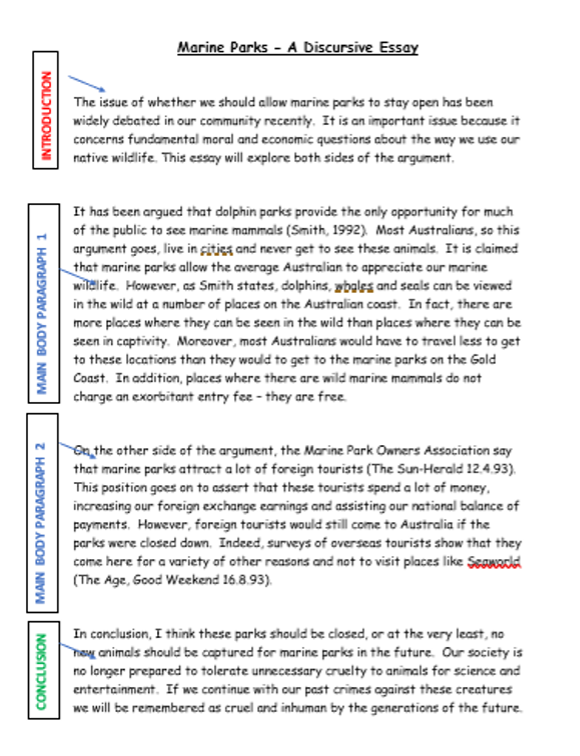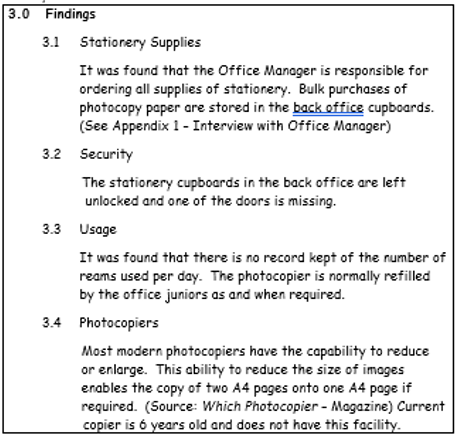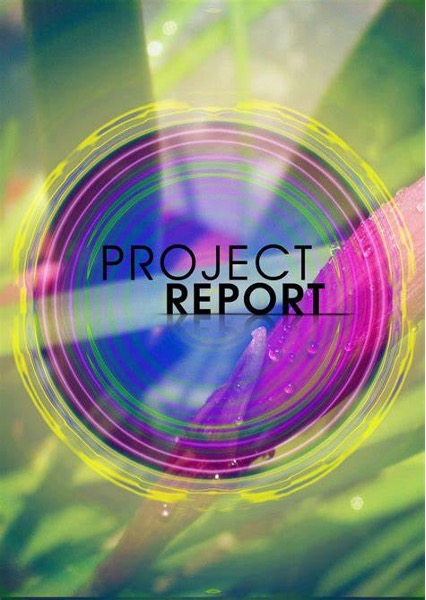Essays
An essay is a short piece of writing on a particular subject, often used to give your opinion
- It is divided into different paragraphs
- Some essays have subheadings but usually you use topic sentences (sentences that make clear what a paragraph will discuss) to structure an essay
Reports
A report is a document that gives detailed information on a subject, often as a result of an investigation and is neutral rather than opinionated
- It is divided into different sections, using headings and subheadings
- In reports you will usually present evidence, analyse it and draw conclusions

Essay Example
Here is an example of a short essay:
Introduction
The first paragraph of an essay is the Introduction. This is where you:
- Introduce the topic you are writing about
- Provide relevant background information
- Say exactly what your essay will do – e.g. “This essay will explore the arguments for and against zoos and marine parks.”
Main body Paragraphs
The most important paragraphs in an essay are your main body paragraphs.
The example essay (above) has only two main body paragraphs, but an essay can have as many main body paragraphs as you need. These paragraphs:
- Make arguments and present evidence
- Discuss topics in detail
Some tips for writing main body paragraphs are:
- Try and keep each main body paragraph a similar length (this helps keep your discussion balanced and the layout clear)
- Try and focus each main body paragraph on one thing – e.g. your first main body paragraph discusses the advantages of zoos, your second main body paragraph discusses the disadvantages of zoos
- Use topic sentences to help the reader follow your structure. A topic sentence is a sentence that acts as a mini-introduction to a paragraph – e.g. “First, let’s look at some of the arguments in favour of zoos.”
Conclusion
The last paragraph will be your Conclusion. This is where you:
- Summarise the main points you’ve discussed
- Draw your arguments together and reach a final position (if applicable) – e.g. “Overall, I think that the advantages of zoos outweigh the disadvantages.”
And that’s your essay done – you’ve crossed the finishing line!
Final Essay Tip
Remember to proofread an essay before submitting it for marking
- careful proofreading will help you pick up and correct small grammar and spelling mistakes
- if you’d like help with proofreading you can e-mail your work to proofreading@dumgal.ac.uk
Report Structures
There are different structures you can use for reports. An example of a report structure is below:
- Introduction (what the report will look at and why)
- Background Research (what we know about the topic already)
- Findings (what your own research into the topic has found)
- Discussion (relating what you’ve found to existing research and information on the topic)
- Conclusion (summary of the most important points in your report)
- References (list of the sources you used)

One of the biggest differences between essays and reports is that in a report you should put forward facts and evidence rather than personal opinions.
- Because of this you should avoid the use of the word “I”
- So instead of saying “I found that, I think that, etc” you should say things like:
- “This report has found that…”
- “Some researchers have suggested that…”
Reports should also be written in the present tense (as if the actions are happening now) and in a formal tone (think of how you would speak at a job interview).
Finally, it is suggested that you write in the passive voice – this BBC resource has guidance and examples on using the passive voice
Headings, Sub-Headings are used in reports to help structure them. Bullet-points can also be used to break down the content into “chunks” that are easier for readers to look at.

Final Report Tip
Reports are usually also presented with a cover page and a contents page
Cover Page
A cover page contains information like your name, course code and the subject of your report.
The best way to make a neat and tidy contents page is to use the automatic content page creator on Microsoft Word
Here’s a link to the latest Microsoft Guide on how to get Word to make a contents page for you!
Download / More Information
You can download this guide as a PDF below or you can click the link to read more of our Study Guides.
